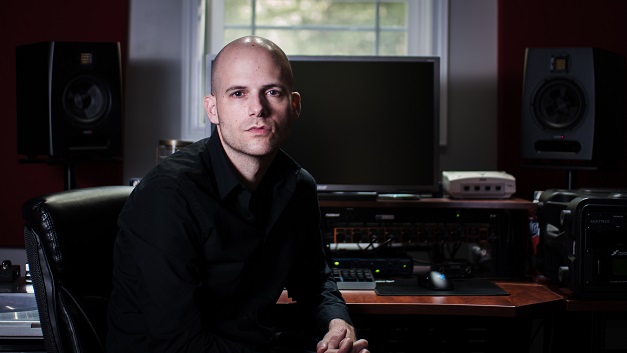“Past tense and future tense, let history unfold. So ends a decade now, what will the 2020s hold?”
Sanctuary, in their infinite glory and unfurled wisdom, uttered nearly the same line when the ’80s flipped over to the ’90s. It pondered many of the same things that are top-of-mind today: How exactly will the next decade proceed, and, will our actions reflect well upon history? That’s probably a bit too deep to dive into at the moment, but the metal scene shouldn’t have much to worry about. Sure, the 2020s will likely spell the end of Ozzy, Priest and Maiden’s careers and surely a half-dozen other high-profile bands, but such is the wheel of time. It remains undefeated.
We can, however, rest our hats on how fertile the metal scene remained throughout the 2010s. There were trends (deathcore, djent and retro rock) that were take it or leave it, while reunions were a-plenty, some more welcome than others. Beyond that, metal became even more varied and, dare we say, “interesting” as the decade progressed. Perhaps it had something to do with the fact commercial viability is now the last thing from a lot of people’s minds, or, there really are that many bands willing to push the envelope. Either way, it was a pleasure to witness and partake in. Onward to the 2020s!
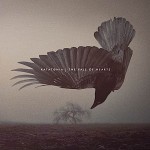
30. Katatonia – The Fall of Hearts (Peaceville)
Rebounding after the not-as-colossal-as-it-should-have-been Dead End Kings, Katatonia went broader and more progressive on The Fall of Hearts, and, in turn, retained its trademark darkness. The album successfully pairs some of the Swedes’ most adventurous riffs (see opener “Takeover”) with their downcast front (“Shifts,” “Pale Flag”). It is perhaps the most layered and complex album in their sterling discography.

29. Aurvandil – Yearning (Eisenwald)
A hereby unknown French black metal combo, Aurvandil created one of the decade’s most unique sounding black metal albums in the form of Yearning. The guitar tone is what ultimately separates the album — soaked in delay, it doesn’t overtake the songs as it does complement them. The songs themselves are morose but climatic, just have a go at “A Guide to Northern Scapes” for proof.
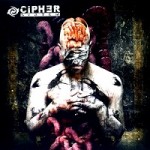
28. Cipher System – Communicate the Storms (Nuclear Blast)
Nowhere near the top of the melodic death metal tier, Sweden’s Cipher System had their one shot at glory with 2011’s Communicate the Storms. Based on its inclusion on this list, they delivered, but the rest of the metal world appeared to pass it by. On display was the style’s hallmarks (At the Gates-like riffing, In Flames melodies and an array of clean vocals), just re-imagined. There is something to be said for execution.

27. Moonspell – Extinct (Napalm)
Moonspell has spent a good chunk of their career trying to move away from their landmark 1996 album Irreligious. On 2015’s Extinct, they finally acknowledged what they should have been all along — they are at their best when playing emotionally-driven, melodic and epic Gothic metal. Fernando Ribeiro’s Dracula wail was in full force, as was a cascade of hummable, Irreligious-like melodies.

26. The Man-Eating Tree – Harvest (Century Media)
Even when he was fronting the sorely missed, highly overlooked Fall of the Leafe, Tuomas Tuominen was difficult to decipher. As in, it was hard to make out exactly what he was saying even though he’s a purebred singer with a voice as unique as they come. He finally entered the ranks of the decipherable by the time The Man-Eating Tree’s sophomore album Harvest rolled around in 2011. It’s graceful hues and careful progressions make it a dark metal album to treasure.
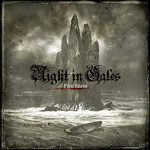
25. Night in Gales – Five Scars (Lifeforce)
One of the last pure melodic death metal bands standing, Germany’s Night in Gales were out of sight for nine years until the release of 2011’s Five Scars. Boasting a production ripped straight out of the ’90s, the album loads up on feverish melodies and the larynx-shredding vocals of Björn Gooßes. Sadly, Five Scars was the last Night in Gales to include Gooßes, but his performance and the album’s never-ending attack continue to endure.
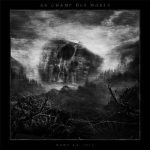
24. Au Champ Des Morts – Dans la joie (Debemur Morti)
Few styles were as amorphous as French black metal throughout the decade. Case in point, Au Champ Des Morts, who occupy the atmospheric end of the spectrum. On their Dans la joie debut, the Frenchman carry weighty, perpetually morose riffing with layered songwriting, all without the guise of keyboards and multitude effects. It’s a remarkably dense album without unnecessary pomp and frill.

23. LowCityRain – LowCityRain (Prophecy)
Just before ’80s synth-wave became “in,” LowCityRain emerged with their lone eponymous LP in 2013. The side project of Lantlôs mainman Markus Siegenhort, LowCityRain — while no means metal — is a dark, savory spread of synth and dark pop, the soundtrack to late-night 80s parties and their aftermath. (Use your imagination.) Whatever the elements, there is no finer recreation of an exact era than LowCityRain, who are suggestive enough to make you try on clothes like Don Johnson.

22. Ava Inferi – Onyx (Season of Mist)
The swansong of this Rune Eriksen (ex-Mayhem)-led group, Onyx was the total realization of Ava Inferi’s lush, sweeping Goth metal sound. Eriksen’s compositional ability here is not to be understated — the unconventional manner in which his melodies flow and cascade on “By Candlelight & Mirrors” and “Venice (In Fog)” practically belie his dissonant Mayhem output. Onyx was a fitting way to go out for Ava Inferi — on top.
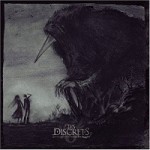
21. Les Discrets – Septembre et Ses Dernières Pensées (Prophecy)
The French language can be beautiful or harsh depending on the speaker. In the case of Les Discrets, it’s the necessary accouterment for the band’s creative blend of atmospheric post-metal and rock. Their 2010 Septembre et Ses Dernières Pensées debut occasionally wandered into metallic territory, but, for the most part, it shines with main dude Fursy Teyssier’s mesmeric acoustic guitar work, not to mention the spare usage of female vocals, which are both timely and significant.

20. Insomnium – Shadows of the Dying Sun (Century Media)
Perpetually on the upswing since their brilliant In the Halls of Awaiting debut, Finland’s Insomnium enjoyed their breakout with 2014’s Shadows of the Dying Sun. Buoyed by the addition of Omnium Gatherum guitarist Markus Vanhala, more melodies are employed, in turn, further bolstering the band’s already melancholic sound. But, there’s a certain degree of both triumph and sorrow across the album’s running order that the Finns may never top. Certainly, few else can either.

19. Paradise Lost – The Plague Within (Century Media)
The Plague Within marked the return of Nick Holmes’s legendary “growl,” a sound unheard since the band’s groundbreaking 1991 album, Gothic. The fact it took 24 years for Holmes to properly growl on a Paradise Lost studio album was the mere tip of the iceberg when it comes to The Plague Within’s all-around versatility, traversing from pure doom, pure death and pure Goth. Rhythm guitarist Aaron Aedy told this scribe The Plague Within “offered something for everyone.” Truer words have not been spoken.
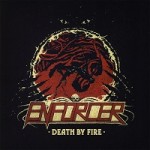
18. Enforcer – Death by Fire (Nuclear Blast)
It always looks like Enforcer lead vocalist/guitarist Olof Wikstrand is smiling whenever he’s at the microphone. Maybe it’s just the way he has to contour his throat to let out his otherwise hellacious screams…they are, of course, some of the best in all of traditional metal, although you’d be hard-pressed to call Enforcer purely a “traditional” metal band after Death by Fire. Its speed and energy were unmatched this past decade. It’s like someone let loose four Swedes on the metal scene and let them go ballistic. Something like that.

17. Kalmah – 12 Gauge (Spinefarm)
Already established by the time the 2010s rolled around, Finland’s Kalmah reached the point of their career where they could start padding their already-impressive resume. Instead, they reeled off (pun intended!) the bombastic 12 Gauge. With their patented lead guitar/keyboard duels in full employ, Kalmah, just like on They Will Return and For the Revolution, unleashed a torrent of exciting guitar harmonies up against the lyrical backdrop of the place they call home: The Finnish swamps.
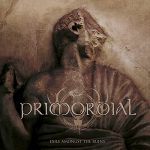
16. Primordial – Exile Among the Ruins (Metal Blade)
Primordial albums only come around every so often, suggesting their creations are laborious pursuits that test the will and mettle of these Irishmen. On 2018’s Exile Among the Ruins, Alan Averill and his gang emerged with their most elaborate, emotionally-driven songs since 2000’s unbeatable Spirit the Earth Aflame. The rallying cries of “Upon Our Spiritual Deathbed” and “Last Call” are enough to embolden even the most dispirited individual.

15. Blut Aus Nord – Hallucinogen (Debemur Morti)
Blut Aus Nord is one of black metal’s most puzzling bands. One album they’re off to the races with malleable, epic black metal, the next, they’re toying around with industrial and avant-garde elements. You never know which way they’ll turn, but, on 2019’s Hallucinogen, they emerged with what is arguably their best set of songs to date, a space-faring, astral affair, with melodies and arrangements that are simply out of this world.

14. Emma Ruth Rundle – Some Heavy Ocean (Sargent House)
Loved by many within the metal scene and a regular touring partner with Deafheaven, Mono and Cult of Luna, Emma Ruth Rundle’s Some Heavy Ocean boasts an array of deep, cutting, cunning and desperate acoustic guitar numbers, driven by her weary, but melodic vocals. There are some truly elusive, but engaging numbers here, in particular, “Shadow of My Name,” “Haunted Houses” and “Savage Saint.”

13. Crippled Black Phoenix – Great Escape (Season of Mist)
One of those bands who so routinely defy description that they’ve never gotten the recognition they so justly deserve, Crippled Black Phoenix went to the art-rock depths and beyond with their 2018 effort, Great Escape. The sheer magnitude of several of these songs — “To You I Give,” “Times, They Are A Raging” and “Great Escape (Pt. 1)” — cannot be understated. They are some of the most striking and heart-rendering compositions in recent memory.
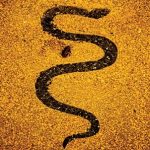
12. Soror Dolorosa – Apollo (Prophecy)
Post-punk, cold wave, Sisters of Mercy-meets-The Cure…regardless of where you put France’s Soror Dolorosa, they are a magnificently dark and effective band, as so discovered on 2017’s Apollo. Vocalist Andy Julia just colors these songs so eloquently. It’s like he’s sitting right next to you reading from his book of poems while you’re in some fancy café in Paris, just hoping to catch a whiff of romance or some action. (“Action” should be loosely defined.)

11. Arctic Plateau – The Enemy Inside (Prophecy)
Arctic Plateau central figure Gianluca Divirgilio has an “interesting” voice, to say the least. He can warble sometimes and even occasionally go off-key, but none of that seemed to matter on The Enemy Inside. Not exactly a metal album (although Divirgilio does bust out some black metal screams on the title track), The Enemy Inside operates within the dark rock boundaries, where simplistic songwriting runs headfirst into emotional willpower and reflection. It’s an album that, on the surface, shouldn’t be this gratifying, but, it really is.

10. Carcass – Surgical Steel (Nuclear Blast)
Already at the front of many decade best-of lists, Carcass enjoyed easily the best comeback album in recent memory. So formidable was Surgical Steel that the Brits are still touring off of it and taking their sweet old time in releasing a follow-up. Truth is, Surgical Steel continues to hold up so well because it’s the perfect cross-section of Carcass’s career, effectively flaunting their melodic death metal know-how with death-grind sensibilities. It’s an album that would have succeeded in any era.
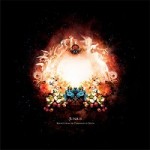
9. Junius – Reports From the Threshold of Death (Prosthetic)
This scribe first bore witness to Junius in 2011 when they were tapped as the opening band on the Enslaved/Alcest North American tour. While they only made a mild impression at the time, the delivery of Reports from the Threshold of Death was blissful. It’s an album without much in the way of riffs but instead relies on space, spacing and dynamics. For those who fancy the art of true songwriting, Reports from the Threshold of Death has infinite value.
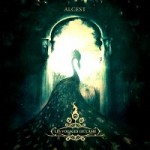
8. Alcest – Les voyages de l’ame (Prophecy)
When Alcest made their supposed retreat from metal with 2014’s Shelter, Les voyages de l’ame felt like a swansong of sorts. The album encapsulated all of the qualities that made the band the forerunners of the now very-happening blackgaze sound, but was delivered with a degree of wonder and allure that could only come from main dude Neige’s endless well of creativity. Nearly eight years after its release and Alcest’s return to their core sound, Les voyages de l’ame has emerged as a subgenre staple.
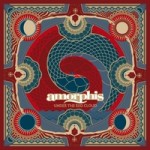
7. Amorphis – Under the Red Cloud (Nuclear Blast)
We’ve run this into the ground, but Tomi Joutsen is the man who nearly singlehandedly revitalized Amorphis. Since 2006’s Eclipse, Joutsen’s vocals have been the careful steward of the band’s melancholic, but progressive sound, but on 2015’s Under the Red Cloud, Amorphis effectively doubled-down on Tales from the Thousand Lakes and Eclipse, churning out an album that heaves melodies and, of course, Joutsen’s multi-faceted vocals.

6. An Autumn for Crippled Children – The Long Goodbye (Wickerman)
You won’t forget the name, that’s for sure. That is often the first thought when pondering Netherlands blackgaze combo An Autumn for Crippled Children, who released an impressive seven albums the last decade, the best being The Long Goodbye. They are prone to being harsh sonically at times, but when their guitar melodies start to come in, they’re like the sun piercing through the sky; evocative and provocative all at once.

5. Paradise Lost – Medusa (Nuclear Blast)
Inspired by “Beneath Broken Earth,” the ultimate doom harbinger found on The Plague Within, Medusa was the rightful return to Paradise Lost’s roots. However, this is not Gothic Part II, but instead, a deep, churning affair that bristles with old-school intention and the band’s trademark grimness. Medusa was so stocked that the pair of Nick Holmes and Greg Mackintosh opted to leave off the album’s best song, which is “Shrines.”
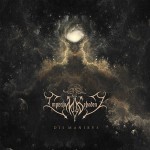
4. Imperium Dekadenz – Dis Manibvs (Season of Mist)
German black metal duo Imperium Dekadenz was onto something with 2013’s Meadows of Nostalgia. On 2016’s Dis Manibvs, they whipped an array of epic black metal that had no less than four world-beaters: “Still I Rise,” “Vae Victis,” “Volcano” and “Pure Nocturnal Rome,” the latter a masterclass in creating titanic black metal. No one did it more epically or better than Imperium Dekadenz.
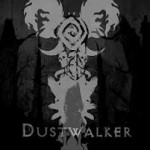
3. Fen – Dustwalker (Prophecy)
Including an acoustic song with a country twang is one of the boldest moves a black metal band can make. For England’s Fen, it was like a casual walk through the forest on 2013’s Dustwalker. The song in question, “Spectre,” is sheer brilliance and the perfect offset to opener “Hands of Dust.” This is where Dustwalker truly emerges — it’s balance and sequence create a level playing field of lush, gorgeous atmospheric black metal with actual riffs and contrasting vocal styles. The wilderness never sounded so glorious.

2. Omnium Gatherum – New World Shadows (Lifeforce)
Rare is the moment when an opening song is so impactful that you’re assured the rest of the album will be just as good. Such was the case for Finland’s Omnium Gatherum on 2011’s New World Shadows with “Everfields.” The song’s patience acoustic guitar strumming over top mid-paced melodic death metal may not feel like anything new, but its grandeur was otherworldly. For the rest of the way, OG combined deft riffing, heightened melodies and a somber atmosphere for an album that jet-set their career.
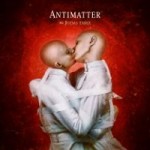
1. Antimatter – The Judas Table (Prophecy)
The wellspring of emotion generated by Antimatter’s Mick Moss on The Judas Table made it the obvious choice for the best album of the decade. There was no album that touched upon so much of the human psyche. Moss did it in such a welcoming manner with songs like “Black Eyed Man,” “Comrades,” “Hole” and the towering title track that it felt like he had an audience of one. The cover art — which divided and puzzled fans — only served as an entry point to an LP that will likely never fade from view.


